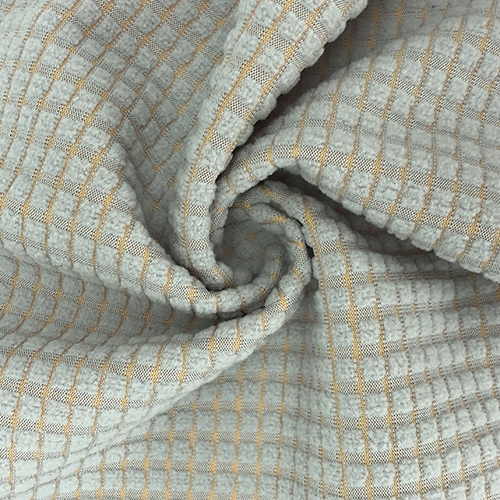1. Dry method. This method is a traditional process, the method is relatively simple, as long as the coating agent is diluted with solvent or water according to the required concentration, and the necessary medicine and coloring agent are added to prepare a coating slurry, and the coating is evenly coated on the base cloth with a coater After drying and baking, the solvent or water evaporates to form a tough film on the base cloth.
The technological process is: base fabric winding → coating → drying → rolling (or embossing) → cooling → finished product winding.
2. Wet method. Dimethylformamide (DMF) is used to dissolve the coating agent (such as polyurethane) to make a coating slurry. After coating, it is immersed in water to form a solidified film. Because DMF can be infinitely miscible with water, DMF dissolves in water, while polyurethane is insoluble in water, its concentration increases rapidly, and finally it is deposited on the base fabric. During the coating solidification process, due to the effect of the semi-permeable membrane, DMF exudes sharply from the polyurethane, resulting in channel micropores perpendicular to the surface of the film. Therefore, the surface of the polymer film is porous, and if the diameter of these micropores is controlled within 0.5-5 μm, it can be made into a rainproof cloth that is breathable, waterproof and moisture-permeable. The process flow of wet coating is: base cloth rolling → coating → immersion in an aqueous solution to solidify → drying → cooling → finished product rolling.

3. Melting method. It uses a thermoplastic resin as a coating agent to heat and coat the base fabric. When it is ready for use, use a hot pressing roller or an iron to heat it to melt the dot, line or net-like resin originally coated on the base fabric. , Bonded to the processed fabric, often used for bonding collar lining. The process flow varies depending on the coating method, and the common ones are as follows.
a. Dusting method. It uses electromagnetic vibration device for powdered resin to evenly sprinkle the powder on the surface of the base cloth, and then fix it in a non-contact oven (or infrared tube). This method commonly used ethylene vinyl acetate coating agent, referred to as EVA lining processing.
b. Powder point method. Coating is carried out on a combined equipment of two hot rollers and one engraving roller. The upper part of this kind of engraving roller has coating agent and scraper. The resin falls into the negative groove of the engraving roller. The temperature of the fabric after the roller is heated can reach 160~180℃. The powder is finished at the moment of contact with the engraving roller. Point transfer. The temperature of the heat roller is controlled at 160~240℃, the transfer temperature of nylon powder is around 55℃, and the temperature of polyethylene powder is around 95℃.
4. Transfer film forming method. It is to first coat the coating slurry on the transfer paper or metal belt pretreated with silicone, and then superimpose the base cloth and the transfer paper face to face and transfer to the base cloth by a pressing roller. After cooling, the transfer paper and Separate the processed fabric and serve. This method is mainly used for a kind of fabric with light and loose structure and sensitive to tension, such as leno, knitted fabric, non-woven fabric, etc. The drying device of the whole machine is conveyed by mesh belt.


